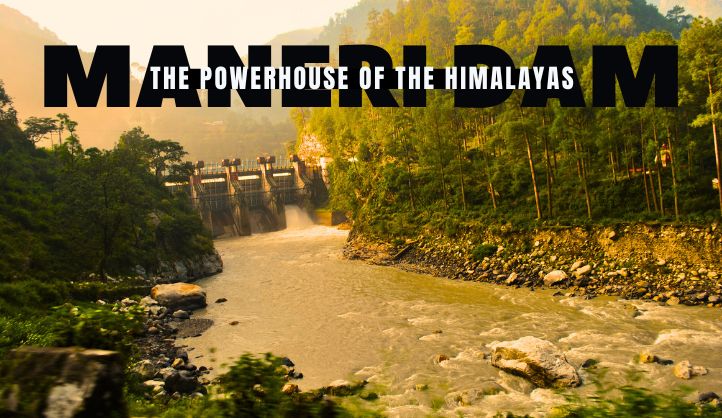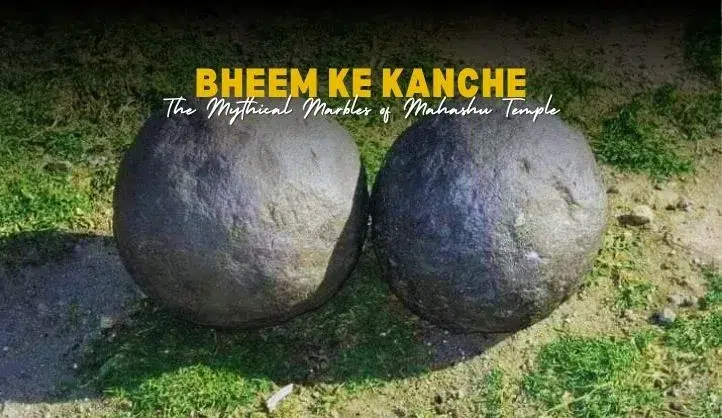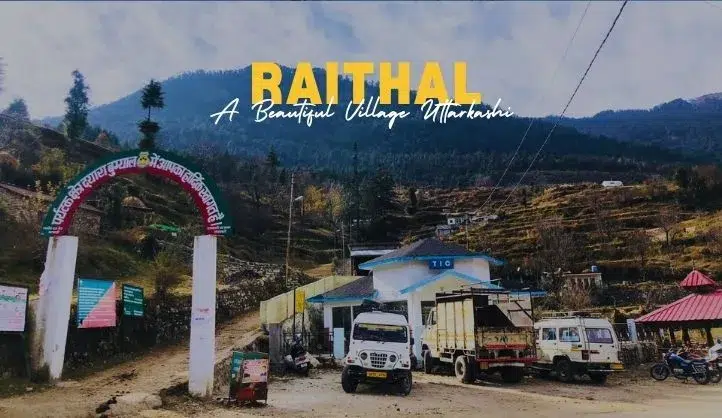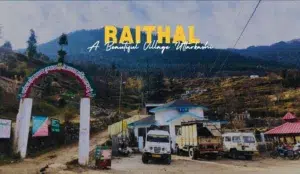The Maneri Dam, situated on the Bhagirathi River, stands as a testament to human ingenuity and engineering prowess. Located approximately 8.5 kilometers (5.3 miles) east of Uttarkashi in Uttarakhand, India, this concrete gravity dam serves a crucial purpose: diverting water into a tunnel that feeds the Tiloth Power Plant, generating 90 megawatts (120,000 horsepower) of hydroelectric energy.
Design and Operation
Dam Specifications
- Height: 39 meters (128 feet)
- Length: 127 meters (417 feet)
- Type: Concrete gravity dam
- Structural Volume: 13,700 cubic meters (17,919 cubic yards)
- Spillway Capacity: 5,000 cubic meters per second (176,573 cubic feet per second)
- Reservoir Capacity: 600,000 cubic meters (486 acre-feet)
- Active Reservoir Capacity: 510,000 cubic meters (413 acre-feet)
- Surface Area: 1.8 square kilometers (1 square mile)
Water Diversion and Power Generation
- Water from the Bhagirathi River is diverted by the dam into an 8.6-kilometer (5.3-mile) long tunnel directly behind the dam.
- The elevation difference between the barrage and the power station provides a design hydraulic head of 147.5 meters (484 feet) and a gross head of 180 meters (590 feet).
- Near the Tiloth Power Plant, the tunnel splits into three penstocks, each powering a 30 MW Francis turbine-generator.
- The power station’s design discharge is 71.4 cubic meters per second (2,521 cubic feet per second).
Energy Output
- Installed Capacity: 90 MW
- Firm Power: 38.23 MW
- Approximately 546 million kilowatt-hours are generated annually.
- The open tailrace channel, about 120 meters long, rejoins the Bhagirathi River at Uttarkashi.
Background
The Maneri Dam is part of the Maneri Bhali Hydroelectric Project, conceived in the 1960s. Its completion and commissioning in 1984 marked the first stage of this ambitious project. The second stage, the Dharasu Power Station, faced funding challenges and remained dormant until 2002 when it was finally completed and commissioned by 2008.
A Dam with a Purpose
The story of the Maneri Dam begins in the early 1980s. Recognizing the immense potential of the Bhagirathi River’s flowing water, engineers envisioned a project that could harness its power for the benefit of the region. Thus, the Maneri Bhali Hydroelectric Project Stage I, encompassing the Maneri Dam, was born. Construction began, and by 1984, the dam stood complete, ready to serve its purpose.
The Maneri Dam itself is a concrete gravity dam, a type known for its stability and reliance on its own weight to withstand water pressure. Standing tall at 39 meters and stretching 127 meters wide, it’s a formidable structure that holds back a reservoir with a capacity of 600,000 cubic meters. However, the dam’s true potential lies not in storing water, but in diverting it for a more significant purpose – generating clean electricity.
How to Reach Maneri Dam
There are three ways to reach Maneri Dam – by car, by bus, or by train.
By Car
The nearest major city to Maneri Dam is Uttarkashi, which is about 16 kilometers away. If you are coming from Delhi, you can take the NH 34 highway to reach Uttarkashi. From Uttarkashi, you can take the state highway to Maneri Dam. The drive from Delhi to Maneri Dam is about 260 kilometers and can take up to 7 hours.
By Bus
There are regular buses that run from major cities in Uttarakhand, such as Dehradun and Rishikesh, to Uttarkashi. From Uttarkashi, you can take a local bus or taxi to Maneri Dam.
By Train
The nearest railway station to Maneri Dam is in Rishikesh, which is about 171 kilometers away. From Rishikesh, you can take a taxi or bus to Uttarkashi, and then from Uttarkashi, you can take a local bus or taxi to Maneri Dam.
The Heart of the Project – Water’s Journey to Power
The Maneri Dam’s design brilliance lies in its ability to efficiently divert water towards power generation. Here’s how the magic unfolds:
-
Intake and Sedimentation: Water from the Bhagirathi River is channeled into the dam through intake bays. To prevent clogging by debris, a sedimentation tank removes any sand or gravel before the water progresses further.
-
Tunneling Through the Mountains: The heart of the water’s journey lies in the 8.63 km long tunnel carved through the mountains behind the dam. This impressive feat of engineering allows for a significant drop in water level, creating the necessary potential energy for power generation.
-
Feeding the Powerhouse: At the end of the tunnel lies the Tiloth Power Plant, located near Uttarkashi. The high-pressure water emerging from the tunnel spins turbines within the powerhouse, converting this kinetic energy into electricity. The Tiloth Power Plant boasts a capacity of 90 megawatts (MW), enough to power thousands of homes and businesses in the region.
The Multifaceted Benefits of Maneri Dam
The significance of the Maneri Dam extends far beyond electricity generation. Here’s how it contributes to the well-being of Uttarakhand:
-
Irrigation Lifeline: The dam’s reservoir serves as a vital source of irrigation for agricultural lands in the surrounding areas. This ensures a steady supply of water for crops, promoting food security and economic growth for the region’s farmers.
-
Flood Control: The dam plays a crucial role in regulating the flow of the Bhagirathi River. By controlling the water level during heavy monsoon seasons, the dam helps mitigate the risk of floods, protecting downstream communities and infrastructure.
-
Environmental Impact: The Maneri Dam provides a clean and renewable source of energy, reducing dependence on fossil fuels and their associated environmental consequences. Additionally, by regulating water flow, the dam helps maintain the ecological balance of the river ecosystem.
Nearby Places to Explore
Happy Valley
Located around 23 km from Maneri Dam, Happy Valley is a serene and picturesque spot ideal for nature lovers. This scenic valley offers opportunities for nature walks, camping amidst the Himalayas, and enjoying breathtaking views of the surrounding mountains.
Gangnani
Explore the natural hot springs of Gangnani, situated roughly 33 km from Maneri Dam. These hot springs are believed to have therapeutic properties and offer a relaxing experience amidst the mountains.
Uttarkashi
Uttarkashi, the “Gateway to Gangotri and Yamunotri,” is a holy town and a popular pilgrimage destination. It’s about 16 km from Maneri Dam. Here, you can visit renowned temples like the Vishwanath Temple dedicated to Lord Shiva, experience the spiritual aura of the Ganges River, and explore the surrounding markets selling traditional souvenirs and religious items.
Nachiketa Tal
This pear-shaped lake, located approximately 42 km away from Maneri Dam, is a sacred place with mythological significance. Legend links the Nachiketa Tal to the story of Nachiketa, son of Sage Gautama, who visited the abode of Yama, the God of Death. The serene lake surrounded by lush greenery offers a tranquil escape.
Conclusion
The Maneri Dam stands as a testament to human ingenuity and its potential to co-exist with nature. It fulfills the region’s energy needs, boosts its agricultural output, and serves as a symbol of progress. By acknowledging its environmental impact and adopting sustainable practices, the Maneri Dam project can continue to serve as a model for responsible development in the Himalayas for generations to come.
So, next time you hear about hydroelectric power or the beauty of the Himalayas, remember the Maneri Dam – a powerhouse nestled amidst the majestic mountains, illuminating lives and shaping the future.
FAQs About Maneri Dam
1. What is the Maneri Dam?
The Maneri Dam is a concrete gravity dam on the Bhagirathi River in Uttarakhand, India. Built-in 1984, it doesn’t store water but diverts it through a tunnel to the Tiloth Power Plant downstream, generating clean hydroelectric power for the region.
2. Why is the Maneri Dam important?
The dam plays a crucial role in Uttarakhand’s development. It provides reliable electricity, supports irrigation for agriculture, and has created employment opportunities. It also serves as a tourist attraction.
3. How can I visit the Maneri Dam?
You can reach Maneri Dam by car, bus, or train. The nearest major city is Uttarkashi, which has good connectivity options. From Uttarkashi, a short drive or bus ride takes you to the dam.
4. What are some things to do near the Maneri Dam?
The surrounding area offers something for everyone. Explore the serene beauty of Happy Valley, relax in the natural hot springs of Gangnani, delve into the spiritual heart of Uttarkashi, or visit the legendary Nachiketa Lake.
5. Is the Maneri Dam eco-friendly?
While the dam offers significant benefits, dam construction can impact ecosystems. Measures are taken to minimize this impact, such as ensuring minimum water flow downstream for the river’s health.









